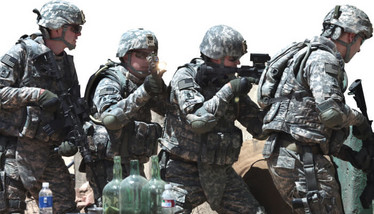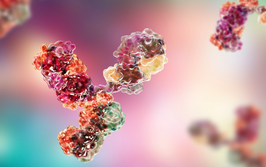Synthetic Silos
3D-printed water-in-water constructs mimic cell compartmentalization with potential in drug delivery

A project funded by the US Army Combat Capabilities Development Command (CCDC) has resulted in a material system that could be used to deliver medicine, treat wounds, and purify water for soldiers in the field. Developed at the University of Massachusetts Amherst, the eco-friendly, synthetic system mimics biological transport and compartmentalization in cells by creating a structured water-in-water environment using water soluble and oppositely-charged polyelectrolytes (1) – with targeted drug delivery presented as one potential application.
The on-demand release of proteins, biomolecules and other compounds from living cells is triggered by a variety of biochemicals. Similarly, the system can be prompted to release or transport compartmentalized molecules using different chemical triggers. By eliciting chemical gradients in the system, biologically relevant compounds can be transported through and/or directly released from the compartments. The researchers believe that this might make the system useful for keeping fragile therapeutic molecules sequestered and safe under storage conditions, and allow for the release of these molecules when needed.
Though the applications of the system are only speculative at this stage, Evan Runnerstrom, Program Manager for Materials Design at the Army Research Office (part of the CCDC), believes that it has the potential to be used in both military and civilian life. “The technology could very well find uses for some advanced medicines, biotechnology, and even energy storage or chemical separation technology.”
The system could also be applied in wound dressings, pre-loading them with drugs to make them more effective. Further research will investigate exactly how the technology can be used. Thomas Russell, Silvio O. Conte Distinguished Professor at the University of Massachusetts Amherst who was involved in the project says, “Our research on water-in-water interfaces has pointed us in the direction of new opportunities for manipulating and improving continuous separation and compartmentalized reactions.”
Russell’s main focus will be on extending the studies to examine diffusion characteristics across membranes and how effective they could be as novel drug delivery systems.
- TP Russell et al. “Compartmentalized, All-Aqueous Flow-Through-Coordinated Reaction Systems”. Available at https://bit.ly/2oyFxIH.
After finishing my degree, I envisioned a career in science communications. However, life took an unexpected turn and I ended up teaching abroad. Though the experience was amazing and I learned a great deal from it, I jumped at the opportunity to work for Texere. I'm excited to see where this new journey takes me!



















